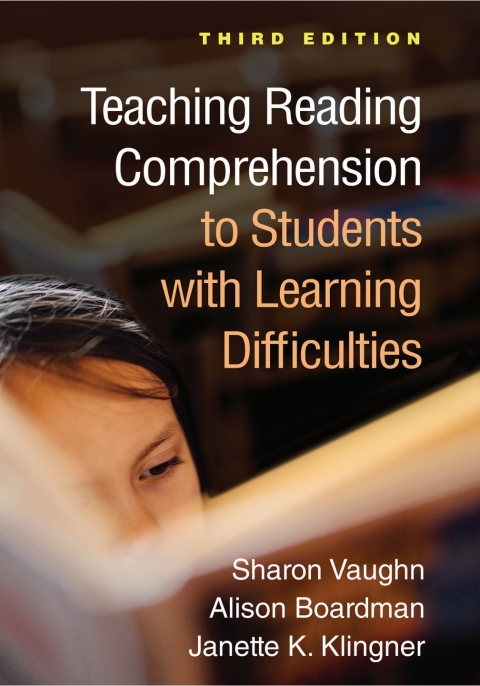Description
Efnisyfirlit
- Half Title Page
- Series Page
- Title Page
- Copyright
- Dedication
- About the Authors
- Preface
- Acknowledgments
- Contents
- 1. Overview of Reading Comprehension
- How Do the Reading Comprehension Skills of Good and Poor Readers Differ?
- Word Reading, Fluency, and Vocabulary: Essential Features of Reading Comprehension
- What Is Involved in Reading Comprehension?
- Conclusion
- 2. Assessing Reading Comprehension
- Challenges of Measuring Reading Comprehension
- Limitations of Traditional Comprehension Assessment Procedures
- Reading Comprehension Measures
- Measuring Metacognitive Reading Processes
- Additional Considerations in Assessing Reading Comprehension
- Conclusion
- Appendix 2.1. Prompted Think-Aloud
- 3. Vocabulary Instruction
- How Does Teaching Vocabulary Facilitate Reading Comprehension?
- How Can We Assess and Monitor Vocabulary Learning?
- Assessing Vocabulary Learning
- What Are the Best Practices for Promoting Vocabulary Acquisition?
- Conclusion
- Appendix 3.1. Vocabulary Assessment within Social Studies Instruction
- 4. Instructional Practices That Promote Reading Comprehension
- Instructional Practices in Reading Comprehension for Students with LD
- Before Reading
- During and After Reading
- Strategies for Understanding Narrative Text
- Reading and Writing Connections
- Conclusion
- 5. Effectively Using Text to Promote Reading Comprehension
- The Importance of Text in Reading Comprehension
- Text Levels and Reading Comprehension Instruction
- Selecting Appropriate Texts
- Text Structure
- Conclusion
- 6. Promoting Content-Area Literacy
- What Is Content-Area Literacy?
- What Is Disciplinary Literacy?
- Reading in the Content Areas
- Conclusion
- 7. Supporting English Learners with Learning Difficulties
- Who Are ELs?
- Factors That Influence Comprehension for ELs
- Recommended Instructional Practices to Support ELs with Reading Difficulties
- Conclusion
- 8. Intensive Interventions for Students with Significant Reading Comprehension Difficulties
- How to Accelerate the Progress of Students with Significant Reading Comprehension Difficulties
- Implementing Strategies That Enhance Cognitive Processing
- Intensifying Instructional Delivery
- Conclusion
- 9. Multicomponent Approaches to Strategy Instruction
- Reciprocal Teaching
- Collaborative Strategic Reading
- Multistrategy Inference Intervention
- Conclusion
- 10. Questions Teachers Ask about Teaching Reading Comprehension
- The Role of Word Reading for Promoting Reading Comprehension
- Secondary Content-Area Teachers and Reading Comprehension
- Building Background Knowledge
- Strategy Instruction and Reading Comprehension
- Text Sources and Text Levels
- Independent Reading, Reading Silently, and Reading Comprehension
- Motivation and Reading Comprehension
- Appendix. Lesson Plans
- Before-Reading Lesson Plans
- Text Preview
- Vocabulary Maps
- Semantic Maps
- Systematic Morphology Instruction
- Essential Words Routine
- During-Reading Lesson Plans
- Main Idea Sketch
- Get the Gist
- Identifying the Main Idea
- Does It Make Sense?
- Activating Background Knowledge While Reading
- Identifying Text-to-Self Connections
- Making and Checking Predictions in a Book
- Identifying Text-to-Text Connections
- Identifying Characters and Setting
- Identifying Sequence of Events in Story Structure
- Identifying Problem and Solution in Story Structure
- Identifying Cause and Effect
- Generating Questions
- Making Inference with Sentences
- Making Inferences in Science
- Click and Clunk
- After-Reading Lesson Plans
- What Do You Know?
- Summarizing Information
- Key Word Review
- Glossary
- References
- Index






Reviews
There are no reviews yet.